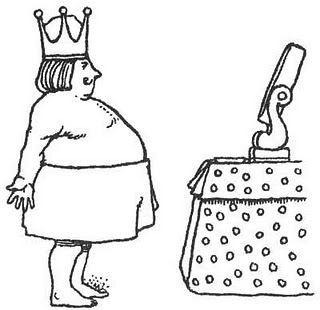New Zealand’s health and safety refurb journey started in 2012, with the creation of an Independent Taskforce. It focused on how incidents like Pike River could happen and why New Zealand’s workplace safety status was so appalling.
In 2013, the taskforce reported back to the nation and thirteen prerequisites for a well-functioning workplace health and safety system were identified. The Health and Safety at Work Strategy 2018-2028 strategy gives an update on what has happened in the intervening years and what the strategic direction is for the next ten years.
At first, when I saw the links come up on social media about the strategy, all I could think was ‘Here we go again! The witless emperor will remain naked while a bunch of minions promise to make invisible clothes to make things better.’ I was wrong.
If you want a ‘Talk to me like a two-year-old… in pictures’, overview look at page 8 Roles in the health and safety at work system and page 9 ‘of the ‘Draft Strategy’. Then read the table on page 31 of the Supporting Background Information for CONSULTATION “Progress on the implementing the Taskforce’s prerequisites for a well-functioning system”.
Why is the Health and Safety at Work Strategy important?
‘New Zealand’s level of work-related harm is still ridiculously high by international standards’
- Cost to families who lose their loved ones is incalculable
- Cost to the economy is estimated at $3.5 billion/year
- There are key population groups at greatest risk are Māori, Pasifika, migrants, older workers, and youth
How can New Zealand do better?
According to the strategy the key areas that need focus are:
- Genuine and effective worker participation
- Strong, visible leadership
- A robust level of capacity and capability with organisations
- Gathering high-quality data and measurement
- Developing a national culture that is more risk aware
- Ensuring work-related health (think hearing loss, cancer etc.) is taken seriously
- SMEs have easy access to useful information
- Population groups at greater risk are effectively targeted
What does the strategy hope to achieve?
- Sets out the Government’s overall direction in improving the health and safety of workers
- Addresses significant capacity or capability issues in the work health and safety at work system
- Takes account of ACC’s injury prevention priorities
- Tripartism throughout the system (government, unions, and business representatives all involved)
New Vision
- Health and Safety in the Workplace is viewed as fundamental to the strength and productivity of New Zealand’s economy.
- Workers are actively involved in workplace health and safety
- Potential risks to workers are managed proactively
Goal 1: A system focused on what will make the biggest impact
- Ensure all businesses have proportionate and effective risk management
- Support businesses with greater need: High-risk sectors and SME’s
- Support workers with the greatest need
Goal 2: A capable system where everyone plays their part
- Ensuring leaders prioritise health and safety and are able to manage risks
- Enabling workers to engage, be represented and participate in making their work healthier and safer
- Lifting specialist capability so that everyone can access the specialist knowledge, tools and services they require
- Better information to improve decision making
What do I like about the Strategy?
Pretty much everything! I think the draft strategy and supporting documents are the best consultation documents that I have seen come out of government in decades. It appears to be balanced, proactive and defines clear accountabilities.
In the search and rescue world, there is an old adage that strategic decisions need to be made by those up in a helicopter with a full view of what is going on, rather than down walking the tracks. I’d say this is more for the people at Heli Base trying to prioritise where to deploy the helicopters on which rescue mission.
The strategy acknowledges that WorkSafeNZ cannot hold guru status, nor can it wave a magic wand (or compliance baton) to make a difference to the workers on the ground. Educational institutions, workplace safety professionals, unions, industry organisations, business leaders and workers are all called to action.
What are the key challenges associated with the strategy?
The strategy does not acknowledge that HASANZ has not made the promised impact on the Health and Safety Profession. Nor, that NZISM is still struggling to act as a viable industry organisation that provides effective member benefits for generalist health and safety professionals (especially ones like me that operate in the regions).
I believe there is a strong need for HASANZ to be successful umbrella organisation and there needs to be a marketing and communication plan developed so that it gains credibility both with practitioners and business owners.
Has it hit the Target? What are your thoughts?
If you have taken the time to read it, do you think the Health and Safety at Work Strategy 2018-2028 is a hit or a miss? Will the emperor remain naked or will some suitable, fit for purpose clothes be found?
I’d be interested to know what everyone else thinks.
SB
